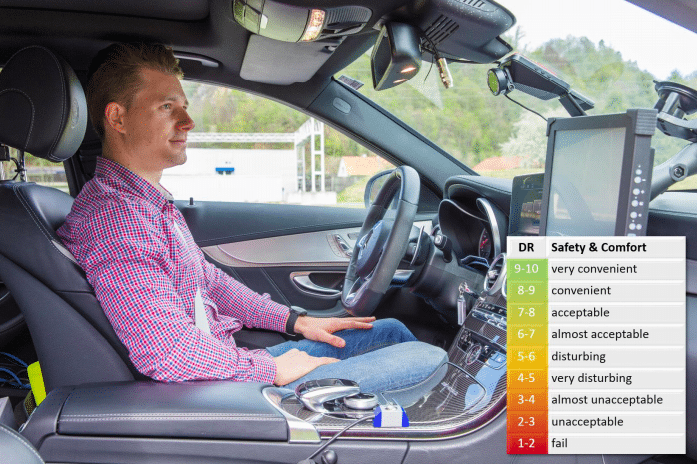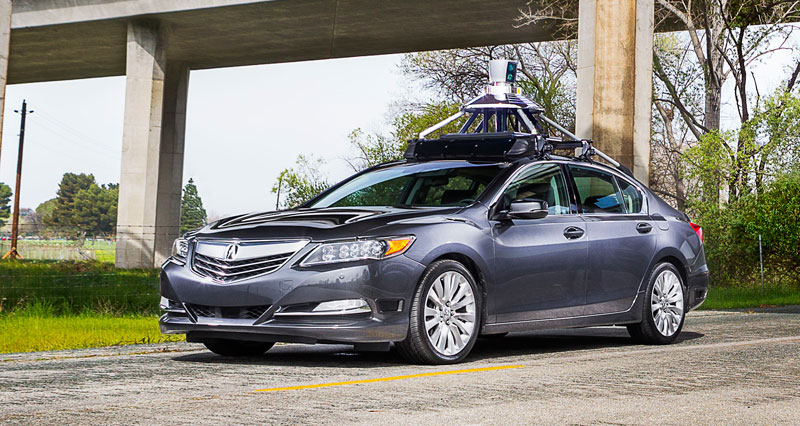Just as a vehicle’s handling can be improved by tweaking the suspension and brakes, active safety systems can also be developed to create a perceivably safer and more comfortable experience behind the wheel. The software behind active safety systems can be honed by exposing the vehicle to common scenarios on the road, evaluating the performance of various functions, and then adjusting algorithms accordingly.
The market drivers for advanced driver assistance systems (ADAS) centre around the concept of incident free driving, improved driver comfort and relief from tedious tasks such as parking or highway driving. But it is not just about making drivers feel more comfortable in a physical sense; learning to trust an automated driving system – even a low-level form of ADAS – can be a big ask, and these systems must put drivers at ease mentally.
Sitting comfortably?
Humans have spent decades coming to terms with the fact that losing control of the vehicle may lead to a serious crash. As a result, ADAS functions must convey to the driver that they are capable of their stated task under supervision. “It is extremely important that the end consumer buys and accepts these features, but in order for this to happen they must trust ADAS,” explained Erich Ramschak, Senior Product Manager, ADAS & Autonomous driving at AVL, during a recent Automotive World webinar. “Passengers are being driven by a machine, and it is important that they feel comfortable with this.”

AVL tests and benchmarks numerous forms of ADAS in various locations around the world, and has developed technology that can evaluate a driver’s perceived level of comfort and safety. Ranked on a scale from one to ten – with one being classed as a ‘fail’ – it takes into account factors such as braking severity and the proximity of other road users. This, says Ramschak, helps AVL’s engineers to understand and optimise the performance of ADAS features during calibration.
Testing can be carried out in the real world or through computer simulation. In physical tests, experienced drivers provide a useful insight into the driving experience and can offer detailed feedback. Experience is also leveraged directly from automakers that also use AVL’s technology. All of this information is then fed into a ‘Car PC’ – a computer that is installed inside the vehicle – where mathematical algorithms run continuously whilst the vehicle is driving, calculating its performance on the fly.
For example, adaptive cruise control (ACC) can be evaluated in various real-world scenarios, such as how the system follows a leading vehicle, how it adapts to that vehicle decelerating or accelerating, or how the system reacts when a vehicle cuts in front on a highway. In testing, this is known as a TOF (Target Object in-Front) scenario, and parameters such as minimum time to collision, delay in response and level of deceleration are all accurately measured. Readings for perceived safety and comfort are then provided on the aforementioned ten-point scale. If a vehicle cuts in front and immediately slows – potentially a last minute manoeuvre in order to take an upcoming exit – the ACC system should recognise this immediately and brake early and smoothly. If it is slow to react, the vehicle may slam on its brakes, or at worst, end up in a collision.
In some cases, test parameters require both a perceived safety rating and a comfort rating. “We cannot only refer to safety or comfort in isolation, we have to consider both aspects,” explained Ramschak. Immediately after an event such as above, a test report is generated automatically and provides a final weighted rating for the ADAS function in question. This occurs continuously during a test drive, with figures updated following each event registered by the system. Physical tests are currently being carried out in Austria, Germany, the UK, China and the US.
To the lab
But given the sheer amount of mileage required to drive in order to validate the performance of an ADAS function, testing must also be carried out via simulation. Here, computer software can accurately replicate millions of driving miles in a short space of time, and is a common approach across the industry for other technologies. In a lab, critical near-crash situations can be safely reproduced, and repeated, with ease. “The real power of this kind of testing is that you can continuously evaluate the same use case,” explained Ramschak, “but you are able to change the parameters, such as the distance from the car to the motorcycle in front, the car’s proximity to the next lane, or the speed of the vehicle.”
It is important that a wide variety of outcomes for a single scenario can be tested and repeated with slight nuances. The idea is to eliminate the ambiguity of potential ‘edge cases’ – rare instances that are unlikely to happen on the road, but could cause serious danger. A slight tweak to the vehicle’s driving speed, or lane positioning, could make or break the outcome of a driving Scenario. Speaking to Automotive World in January 2018, Phil Morse, Technical Liaison for Ansible Motion, a UK-based specialist in driver-in-the-loop (DiL) simulators, noted that: “When considering systems that can intervene in driving, the sheer variety and number of tests that need to be conducted in order to verify and certify something for release in the wild is staggering. If a system can affect the trajectory of the vehicle, it has as much potential to cause incidents as it does to prevent them.”

It is not only time consuming carrying out ADAS testing, it can also be expensive. Unless strict parameters have been met and a license has been obtained, autonomous vehicle testing cannot be carried out on public roads and thus private land is required to put vehicles through their paces. Michigan’s Mcity is one of the more prominent examples of a dedicated autonomous vehicle proving ground, with Ford having used its model urban environment for extensive testing since 2015. Then there is the GoMentum Station in Concord, California, a 5,000-acre abandoned naval base that has been used as a test bed by the likes of Honda, Toyota and Lyft. In September 2018, FCA announced it had invested US$30m into a Michigan-based ‘proving grounds’ to develop and test autonomous driving technologies.
In many cases it is these locations that allow companies to apply for a license in the first place, having racked up enough off-road data to support their application. However, whilst it is one thing ensuring the figures stack up, prospective buyers also need to be won over, and the topic of ‘perceived comfort and safety’ is expected to heat up in coming years as a result.
